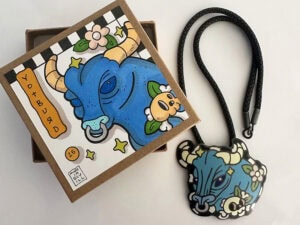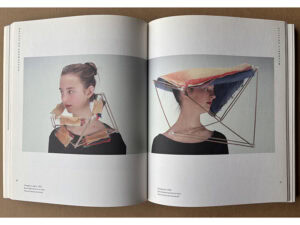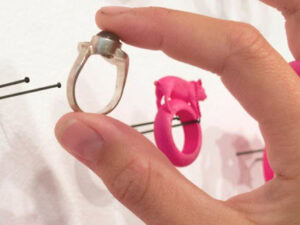
Karin Jones is a multidisciplinary artist whose recent work examines the ways in which historical narratives shape our identities. The Canadian graduated from the jewelry art and design department at Vancouver Community College in 1993 and now serves as the department head of the program. She received her MFA from NSCAD University. Her work has been exhibited across the world and is in permanent collections including those of the Vancouver Art Gallery, the Metal Museum, Royal Ontario Museum, and the Canadian Embassy in Tokyo. Jones has held residencies and apprenticeships in Finland and Germany, and will begin a residency at the Burrard Arts Foundation this fall.
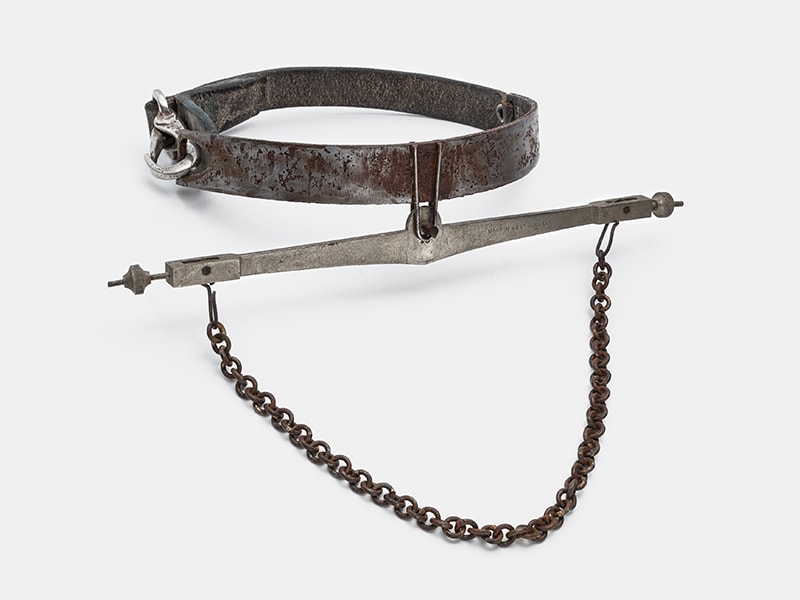
As an artist and a jeweler, Jones asks herself: “I have an idea, a message to convey—is jewelry the best medium to express that idea?” Many times it is, but not always. In answering this question, Jones says, it’s important to really think about how the idea, and the art being created to express it, relate to the body. She’s conflicted about just placing an object on the body and calling it art simply because the object expresses an idea. Rather, in choosing jewelry as the medium for art, Jones believes it’s necessary to ask, “how is having the object on the body integral in enabling the art object to express an idea?”
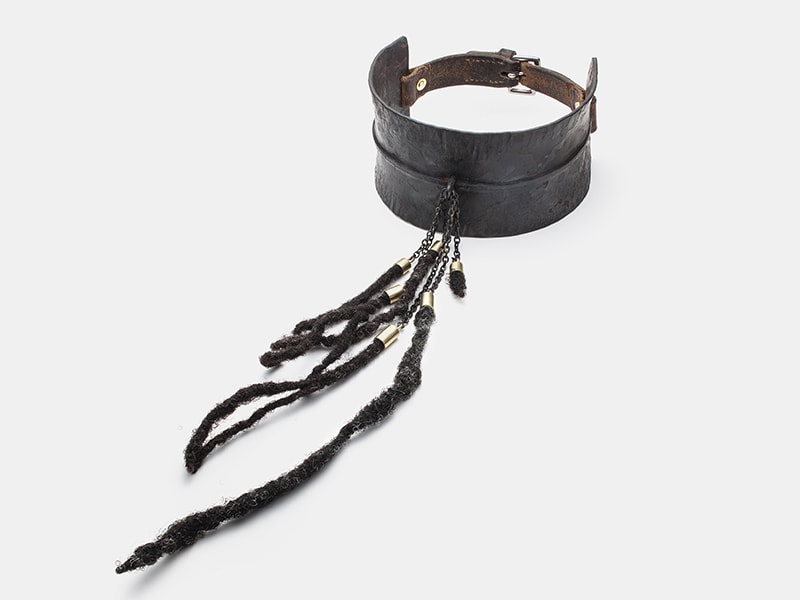
Jones’s recent work exhibited at the Vancouver Art Gallery is the outcome of years of thinking about these ideas. Her series (body of work) is based on the shackles and restraints that enslaved persons were forced to wear. Having spent her life making metal objects for people to put on their bodies, she was struck by images of the metal objects forced upon the bodies of enslaved people to cause pain and confinement. As a Black woman herself, she thought about this history that shaped her identity, that she carried with her, that was forced upon her. She created a series of eight neckpieces using the techniques she developed as a goldsmith, integrating materials like human hair, corn,[1] and rusted steel as a way to work through the impact of the painful history of enslaved bodies on the identities of Black bodies generations later. For Jones, it was a very personal process, but her work also gave her a platform to talk about the ideas more publicly, to share what she had learned with others. It also helped her answer the art jewelry question she wrestles with: Are some ideas too big for jewelry? Perhaps not, but careful consideration of jewelry as the medium for the art is essential.
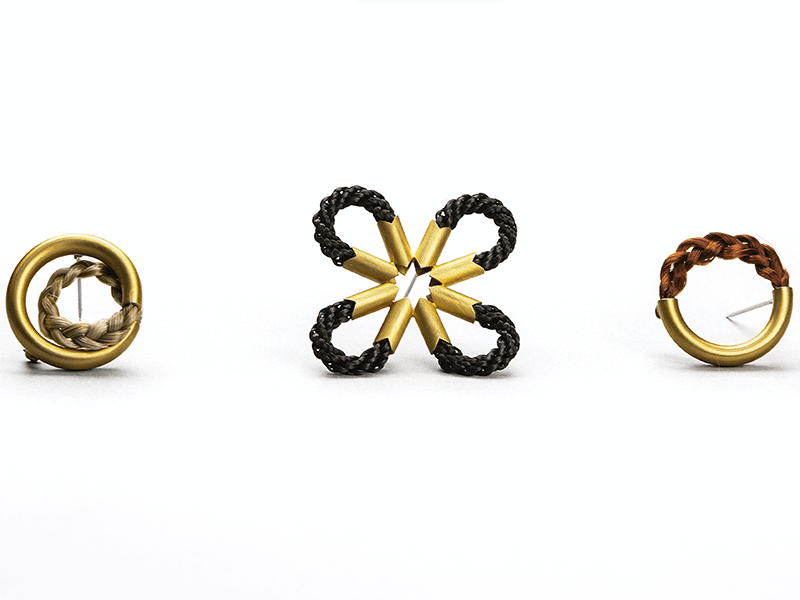
In a more playful but equally powerful series, Jones made brooches of hair to explore racism in social standards of beauty. Adapting the concept of Victorian mourning jewelry, the brooches are made with woven fine straight hair merged with gold tubing. But her art didn’t stop with the jewelry. Jones wore the brooches in a performance which involved her also donning wigs that matched the hair used to construct the pins while striking goofy glamourous poses. This performance was then captured through photography. The merging of the jewelry with performance and photography creates an impact that the pieces of jewelry alone cannot have. When the jewelry pieces are placed on a body that itself is challenging and poking fun at beauty standards, the jewelry communicates more strongly as a medium for the intended message.

Jones continued to explore racism in standards of beauty but chose another medium of adornment to express her message—the Victorian dress. As Jones notes in an artist talk,[2] Sarah Baartman was taken from Africa in the early 1800s, brought to Europe, and forced to perform in carnival sideshows. Her body, especially her large buttocks, was made an object of spectacle, a symbol of primitive sexual stereotypes of African women. Along with the criticism of and contempt for Baartman’s body arose a simultaneous fascination with and emulation of it, demonstrated by the corresponding increases in the size of the bustles of the Victorian dresses in fashion for white women at the time. To address the long history of stereotypes of Black women’s bodies, Jones painstakingly adorned a Victorian mourning dress with hundreds of braids of African hair. The dress, commissioned by the Royal Ontario Museum to document the presence and absence of Africans in Canada’s historical narrative, also speaks to the invisible labor of African women in the textile trade who helped build the economies of Britain and Canada.
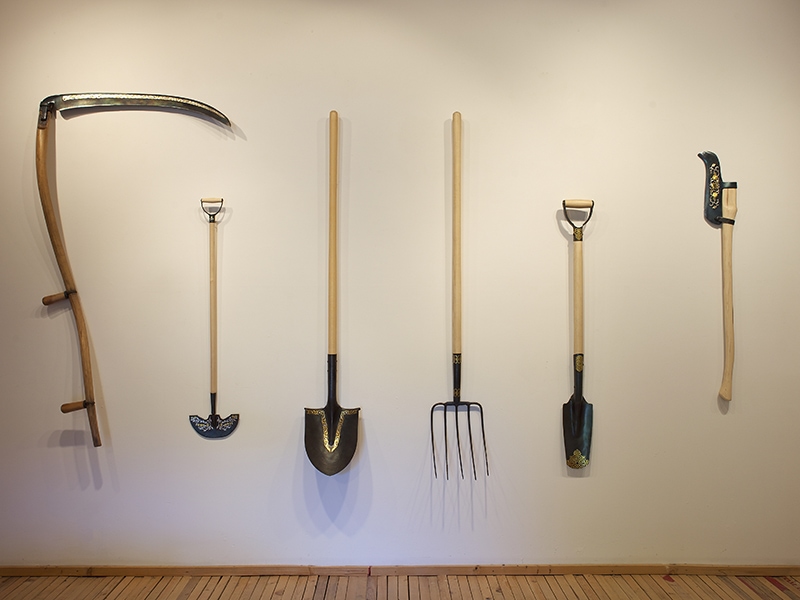
Early in her career, Jones worked with damascene, inlaying silver and gold on steel in her jewelry. She started to think about themes that she could explore by applying these techniques to non-jewelry pieces. One series of work used damascene to inlay gold and silver in Arts and Crafts patterns in the steel of common garden tools—shovels, a pitchfork, a sickle. The work was displayed in a gallery space on Salt Spring Island, off the coast of British Columbia, and was well received as art on the themes of the preciousness of farming and the romanticization of rural life.

In an even earlier line of work, Jones worked with colorful champlevé enamel, painting enamel by hand, firing it with a torch by hand, grinding it with a stone by hand. She loved that process, found it really meditative, not wanting to rush the work even if it meant bringing in less money. At the time, she started to explore Ethiopian art, in particular the use and meaning of eyes. So she made a jewelry piece with eyes and a mirror inside. “It was supposed to mean something about looking at yourself, or examining your soul,” she says. It was going to be part of a show at a space that mainly sold jewelry but because it was an exhibition, she thought she would work with a theme and people would want to talk about the ideas. During the exhibit, however, nobody really cared about the message behind the piece; they weren’t interested. People just looked for pieces they liked as fashion objects and would want to wear. Looking back now, Jones is proud of the piece but sees it as “somewhere between something decorative and something artistic that didn’t really convey a message very strongly. I was young,” she says, laughing. She learned serious lessons about how to share powerful messages through her work. The medium matters, and so does the space where the objects are displayed.
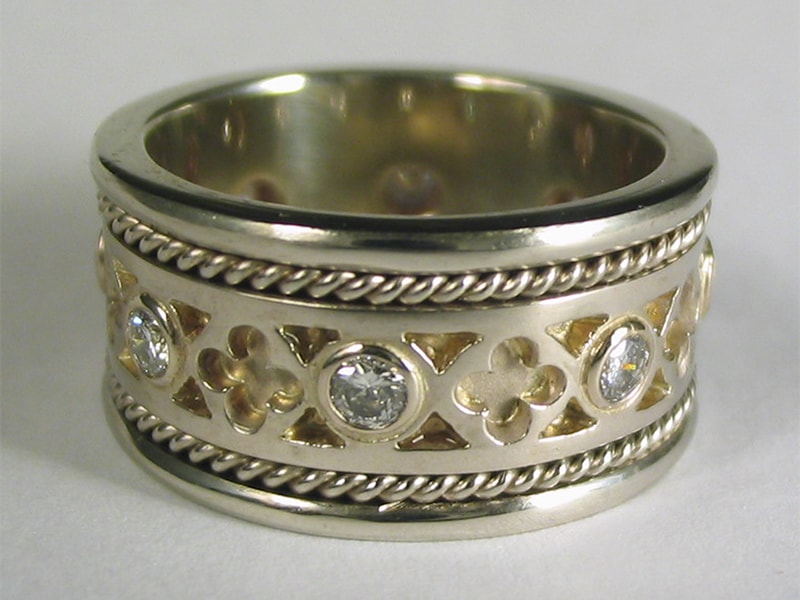
Jewelry as a medium can more easily be considered art in contemporary gallery spaces rather than in commercial spaces. Not being displayed alongside pieces that are being sold for adornment has the power to transform jewelry objects into art. People, Jones notes, come into a space that is reserved for art almost as if it were a sacred space, thinking about the ideas that the pieces are sending, rather than just thinking whether they want to buy the work and wear it.
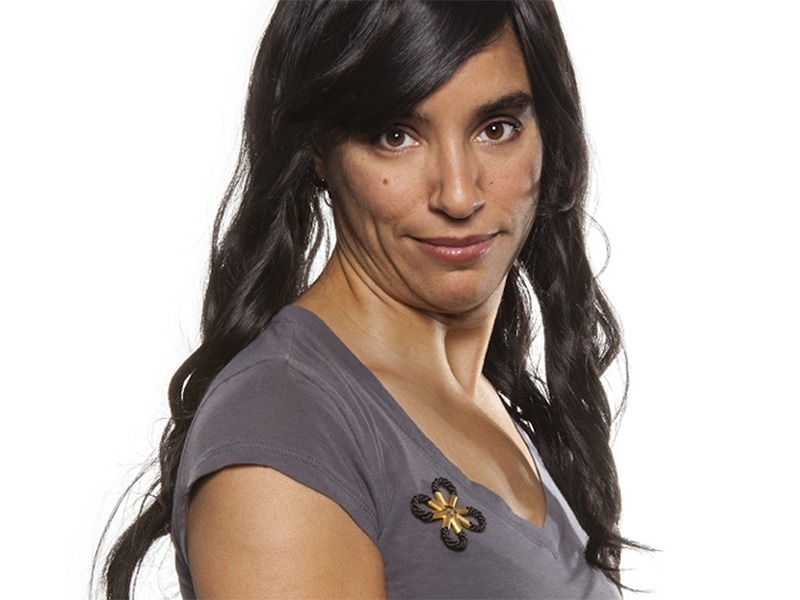
Because galleries often don’t consider jewelry as a possible medium for art, they often don’t have ways to safely and effectively display jewelry in their spaces. This, Jones finds, reinforces the impediments against having jewelry in art spaces. She explains, “I knew that if I wanted to show my work in those spaces, the simplest thing I could do was to overcome those barriers, as a practical, logical thing to solve the problem of how to show my work in a gallery.” Jones views assisting galleries in displaying art jewelry as part of her work. Using her metalsmithing skills, she made shiny mounts of brass to hold the neckpieces in her (body of work) series. She also attached the mounts to painted black panels at neck level, symbolizing an absence of the body and the absence of African artists in the western art world—in this way she again went beyond the jewelry medium in order to add to the message.
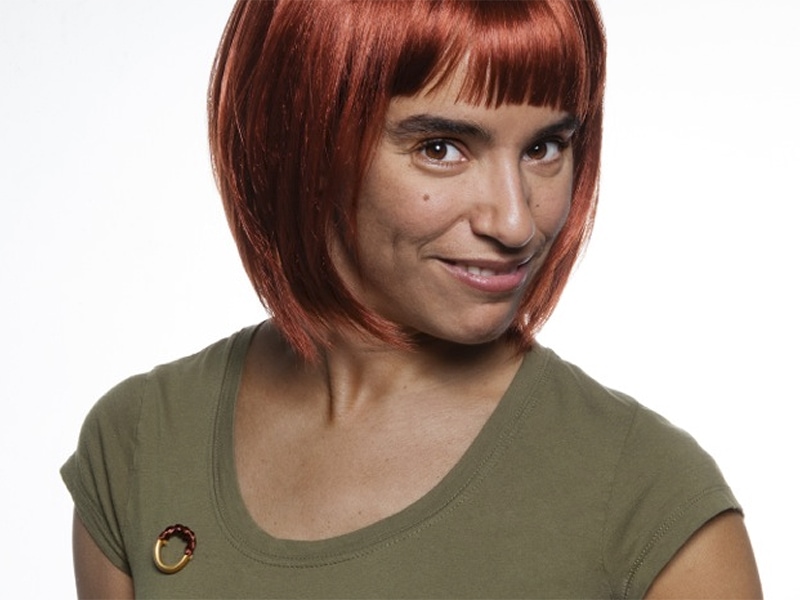
In jewelry school, Jones learned that jewelry had to be art. In her MFA program, she learned that her art doesn’t always have to only use jewelry. In many ways, the lines confining jewelry as a medium that requires the strong, specific skills she loves to use help her as an artist. Yet the boundaries and corresponding categories that can make her feel like her medium has to be jewelry can be limiting too.
Given that she is now well known as a contemporary artist, it is interesting that Jones lights up when she talks about her time as a goldsmith and making and selling her own line of jewelry at markets and through her business—taking pride and pleasure in having the skill to make the rings that made a couple happy, or coming up with a successful strategy to mend a treasured piece that seemed beyond repair. In these cases, she said, the jewelry wasn’t art, and wasn’t trying to be. Rather, jewelry was a thing on its own, and the people who commissioned a piece from her or purchased an item she had on offer bought it and wore it not because of what she wanted the piece to say but because of what they felt it said about themselves. Her art is personal to her; her jewelry is personal to those who wear it, and she loved that.
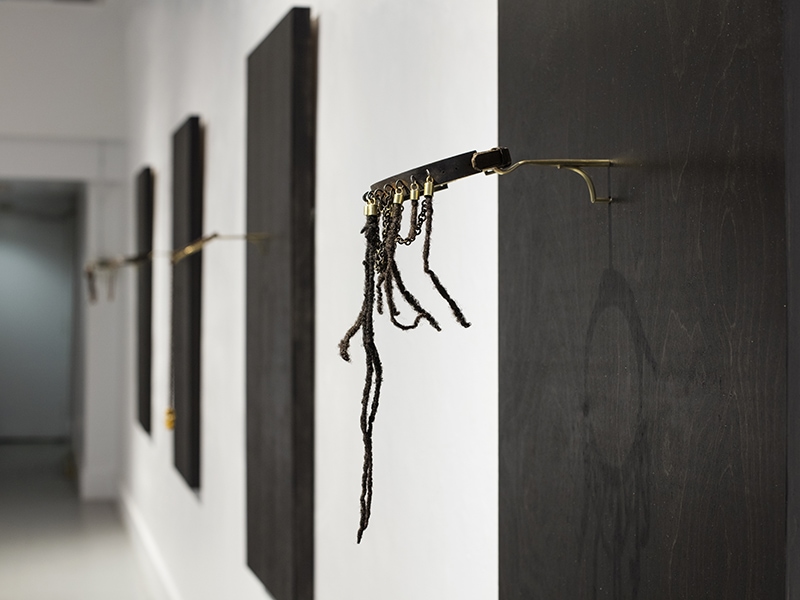
Now that her work has been widely recognized as art, with her show in the Vancouver Art Gallery and residencies and shows lined up for the future, Jones feels she has crossed a boundary. People now expect her work to be art, engaging with themes that are personal to her and critical socially. It would be hard to go back to the jewelry pieces, even though they brought her so much joy to make and others joy to wear. But her love and skill for jewelry will always be part of her influential work as one of the leading contemporary artists, using jewelry as a medium, in Canada today.
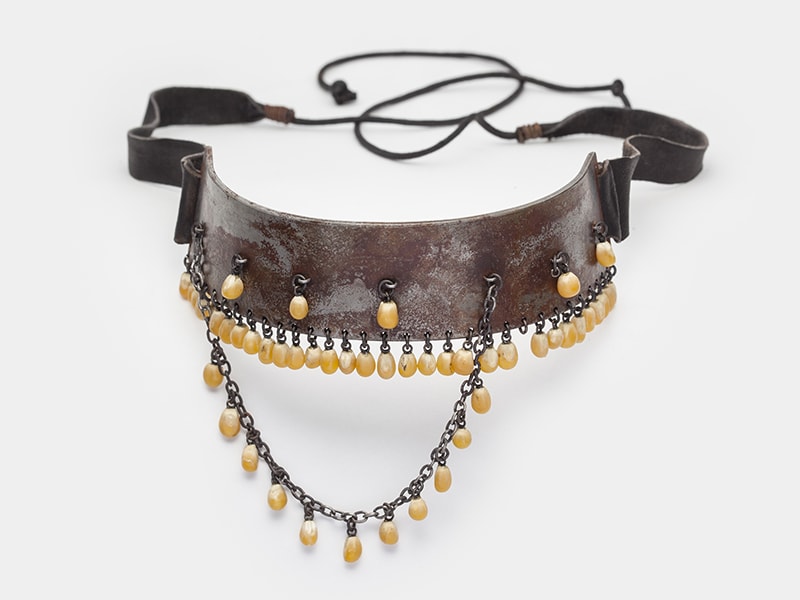
[1] While it has a deeper personal meaning for Jones, the corn (including the type of corn, hominy) in her work also represents the fields and agriculture as well as poverty and finding beauty with limited resources and among ugliness.
[2] You can watch the artist’s talk here. Links to other talks are on Jones’s website.

